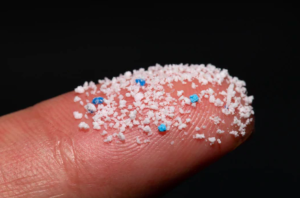
Environment
Why forensics could be key to untangling the ocean microplastics crisis
Scientist Peter Ross uses all the high-tech tools of a crime scene investigator — except his crime scene is the open ocean
- 2179 words
- 9 minutes
This article is over 5 years old and may contain outdated information.
Environment

If you think drinking bottled water instead of tap water will protect you from ingesting contaminants, think again.
A 2017 study conducted by Abigail Barrows, an Ocean Analytics marine research scientist, and released earlier this week analyzed 19 different bottled water brands for microparticle contamination in the forms of plastic fibres and fragments.
Commissioned by The Story of Stuff Project, a California-based non-profit aimed at helping citizens rethink what and how much they consume, the study categorized each found piece of plastic by shape, colour and size.
Ranking in the top spots with the highest amounts of total microplastic contamination were luxury brands Boxed Water, Fiji and Evian — companies that advertise with slogans like “Better for the planet. Better for all of us,” “Bottled at the source, untouched by man,” and “All natural and perfectly pure.”
Of the 19 brands analyzed, only one, Aquafina, was found to contain no discernible particle contamination. “Although we don’t fully understand yet the health implications of consuming microplastic, the preliminary results of this study show that people are directly ingesting plastic particles when drinking most types of bottled water,” says Barrows.
Unfortunately, switching to tap water might not protect you from ingesting microplastics. Earlier this year, Orb Media tested 159 drinking water samples from towns and cities across five continents and found that 83 per cent of those samples, including three in the United States, contained microscopic plastic fibres. While the cause of this contamination can be attributed to multiple sources, studies have shown that machine-washing synthetic clothing like fleece is one of the biggest contributors of microplastics to the water supply.
The animated short below explains how microplastics make their way into the water supply.
Are you passionate about Canadian geography?
You can support Canadian Geographic in 3 ways:

Environment
Scientist Peter Ross uses all the high-tech tools of a crime scene investigator — except his crime scene is the open ocean

Environment
A team of Canadian researchers has found evidence that microplastics and microfibers have infiltrated Arctic ecosystems, but the source of these tiny fragments is still unclear

Environment
Peter Ross, vice-president of research at Ocean Wise, explains his work on marine microplastic pollution and why we all have a role to play in combating it

Environment
Doing your part as an eco-conscious consumer doesn’t end once you buy a bioplastic product